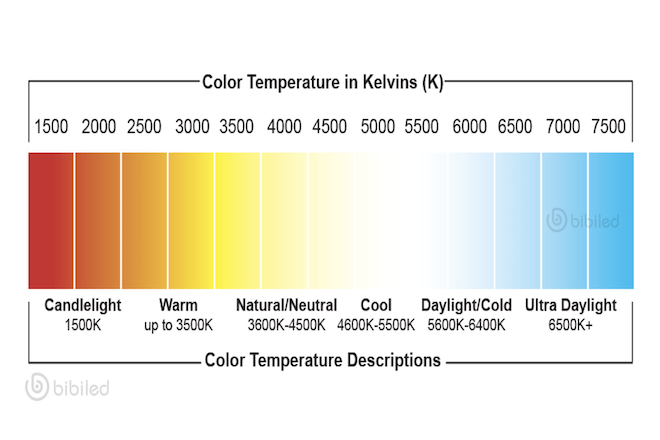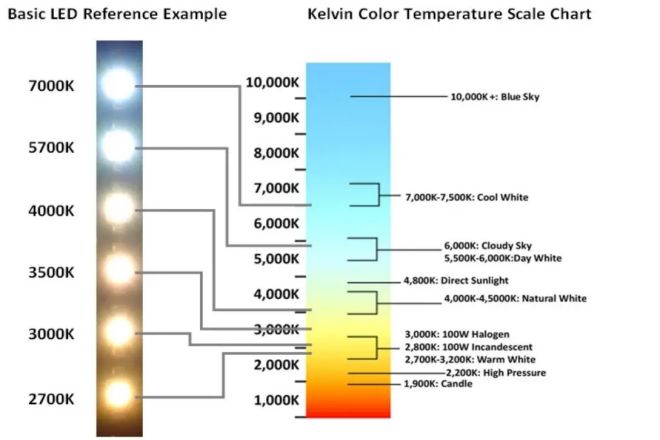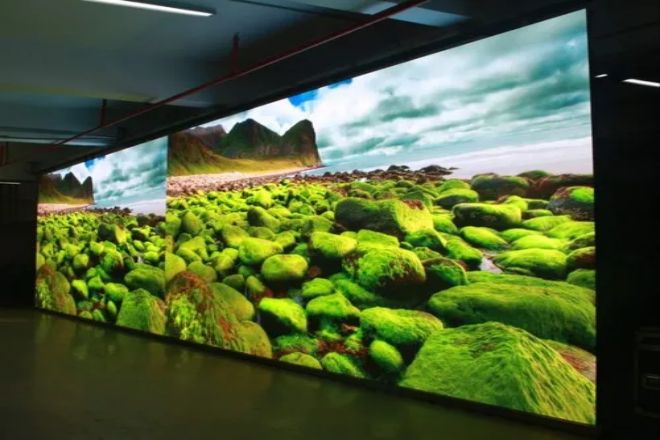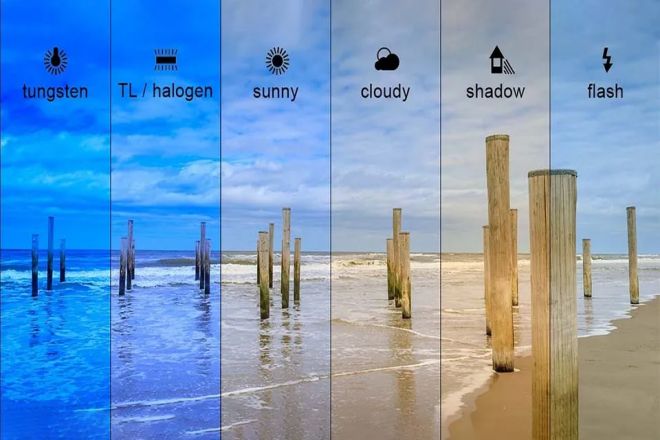Introduction

Entrer dans le monde coloré de Afficheurs LED, avez-vous déjà été profondément attiré par les couleurs en constante évolution ? Cependant, derrière ces lumières brillantes, un élément souvent négligé mais crucial : la température de couleur, affecte discrètement votre plaisir visuel.
La température de couleur n’est pas seulement une pile de chiffres ; c’est un transmetteur d’émotions, un créateur d’atmosphère et une arme d’expression créative.
Cet article vous emmènera au cœur de la température de couleur de l’affichage LED et dévoilera le secret de cette magie visuelle.
Pas besoin de théories encombrantes, suivez simplement nos étapes, vous maîtriserez facilement l'impact de la température de couleur sur l'effet d'affichage de l'écran LED et comprendrez comment ajuster de manière flexible la température de couleur en fonction des différentes exigences de la scène, afin que votre travail se démarque et que le public soit brillant.
1. Concept de base de la température de couleur de l'affichage LED

Température de couleur est une grandeur physique qui décrit la couleur de la lumière émise par une source lumineuse et la couleur de la lumière émise par un corps noir à une certaine température. Son unité est le Kelvin (K).
La définition scientifique de la température de couleur provient de la théorie du rayonnement du corps noir en physique. Plus précisément, si un corps noir standard doté de capacités d'absorption et de rayonnement complètes est chauffé, à mesure que la température augmente progressivement, la couleur de la lumière émise par la surface du corps noir passe du rouge foncé au rouge clair, puis au jaune orangé, au blanc et enfin au bleu.
Si la couleur de la lumière émise par une certaine source lumineuse est la même que la couleur du rayonnement du corps noir à une certaine température, alors la température du corps noir est appelée température de couleur de la source lumineuse.
1). La relation entre la température de couleur et la couleur
La température de couleur affecte directement la couleur de la lumière émise par la source lumineuse. En fonction de la température de couleur, la couleur de la source lumineuse changera considérablement :
Température de couleur basse (inférieure à 3 300 K) : la lumière émise par la source lumineuse est jaune chaud, ce qui procure aux personnes une sensation de chaleur, de confort et de détente. Cette température de couleur est généralement utilisée dans les occasions où une atmosphère confortable doit être créée, comme dans les maisons, les restaurants, etc.
Température de couleur moyenne (entre 3300K et 5300K) : La lumière émise par la source lumineuse est blanche naturelle ou blanche neutre, avec des couleurs douces et confortables, proches de la couleur de la lumière du soleil en journée. Cette température de couleur est largement utilisée dans les bureaux, les espaces commerciaux et autres lieux où une sensation de lumière naturelle doit être maintenue.
Température de couleur élevée (supérieure à 5 300 K) : la lumière émise par la source lumineuse est d'un bleu froid, proche de la couleur de la lumière du soleil de midi, procurant aux personnes une sensation lumineuse et rafraîchissante. Une température de couleur élevée est souvent utilisée dans les endroits où un travail efficace ou un affichage haute définition est requis, comme les bureaux, les salles d'opération des hôpitaux, etc.
2). Caractéristiques de la température de couleur des écrans d'affichage LED
Les écrans d'affichage LED présentent une grande flexibilité et des avantages significatifs en termes de réglage de la température de couleur :
- Large plage de réglage de la température de couleur :
La plage de réglage de la température de couleur des écrans LED s'étend généralement de 3 500 K à 9 000 K, couvrant diverses exigences d'éclairage, du jaune chaud au bleu froid. Cette large plage de réglage permet aux écrans LED de s'adapter à une variété de scénarios d'application et de besoins visuels différents.
- Contrôle précis de la température de couleur :
La technologie d'affichage LED moderne continue de progresser, ce qui permet de contrôler la température de couleur avec une précision de plus en plus élevée. Grâce à une technologie avancée de réglage de la température de couleur, les écrans d'affichage LED peuvent obtenir un contrôle précis de la température de couleur pour garantir le meilleur effet d'image dans différents environnements.
- Améliorer l'expérience de visionnage :
Dans les cinémas, les musées, les bureaux et autres lieux, les écrans LED peuvent créer une atmosphère et une émotion qui correspondent à la scène en ajustant avec précision la température de couleur. Cela améliore non seulement l'expérience visuelle du public, mais renforce également l'effet de transmission des informations.
- Haute efficacité et économie d'énergie :
Les écrans d'affichage à LED peuvent maintenir une efficacité lumineuse élevée et une faible consommation d'énergie pendant le réglage de la température de couleur. Cela est dû aux caractéristiques d'économie d'énergie de la source lumineuse LED elle-même et à la technologie avancée de dissipation de chaleur, qui permet à l'écran d'affichage à LED de maintenir des performances stables pendant un fonctionnement à long terme.
2. Quels sont les facteurs qui affectent la température de couleur des écrans d’affichage LED ?
1). Types de puces LED
Il existe différents types de petites perles de lampe (appelées puces LED) sur les écrans LED, qui peuvent émettre une lumière de différentes couleurs. Par exemple, certaines puces LED fonctionnent avec des puces de lumière bleue et une substance qui peut transformer la lumière en jaune (appelée phosphore).
En ajustant la quantité de phosphore, la lumière peut être rendue plus chaude ou plus froide. Certaines puces LED sont directement rouges, vertes et bleues. En contrôlant la luminosité de ces trois couleurs, il est possible de mélanger n'importe quelle couleur souhaitée, y compris la lumière blanche de différentes températures de couleur.
2). Technologie actuelle et de contrôle
Lorsque la puce LED est sous tension, l'intensité du courant affecte la luminosité et la couleur de sa lumière. Si le courant est instable, la couleur de la lumière émise par la LED changera et la température de couleur sera instable.
Il est donc nécessaire d'utiliser une technologie avancée pour contrôler le courant et le maintenir stable afin que la température de couleur de l'écran LED reste constante. C'est comme lorsque nous ajustons le débit d'eau du robinet ; nous devons l'ajuster à la bonne taille pour que l'eau n'éclabousse pas.
3). Température ambiante
L'écran LED chauffe lorsqu'il fonctionne, tout comme nous sentirons l'arrière du téléphone chaud après avoir joué avec pendant une longue période. Si la température ambiante est trop élevée ou si l'écran ne dissipe pas bien la chaleur, la puce LED ne fonctionnera pas correctement car elle est trop chaude, ce qui entraînera un changement de couleur de la lumière émise et la température de couleur sera erronée.
Par conséquent, nous devons installer un dispositif de dissipation de chaleur sur l'écran, tel qu'un petit ventilateur ou un dissipateur thermique, pour l'aider à refroidir et à continuer à fonctionner normalement.
4). Utiliser le temps et le vieillissement
Tout vieillit lentement après une longue utilisation, et les écrans LED ne font pas exception. Après une utilisation à long terme, la puce LED et les matériaux à l'intérieur vieillissent progressivement, tout comme nos chaussures s'usent après avoir été portées pendant une longue période. Cela entraînera une atténuation de la lumière émise par la LED et un changement de couleur, y compris la température de couleur.
Bien que cela soit inévitable, nous pouvons retarder ce processus de vieillissement en choisissant des puces LED de bonne qualité et une utilisation et un entretien raisonnables afin que l'écran puisse rester en bon état plus longtemps.
3. Comment régler la température de couleur de l'écran LED

La méthode de réglage de la température de couleur de l'écran d'affichage LED peut être principalement réalisée à partir de trois aspects : le contrôle logiciel, le réglage matériel et la liaison intelligente :
1). Contrôle logiciel
- Mode de température de couleur prédéfini :
La plupart des écrans d'affichage LED modernes sont équipés d'un logiciel de système de contrôle, grâce auquel les utilisateurs peuvent régler directement la température de couleur.
Le logiciel du système de contrôle fournit généralement une variété de modes de température de couleur prédéfinis, tels que le blanc chaud, le blanc naturel, le blanc froid, etc. Les utilisateurs peuvent choisir le mode de température de couleur approprié en fonction de leurs besoins.
- Réglage personnalisé de la température de couleur :
En plus du mode prédéfini, certains systèmes de contrôle avancés permettent également aux utilisateurs de définir une température de couleur personnalisée.
Les utilisateurs peuvent définir avec précision la valeur de température de couleur requise en ajustant le rapport de luminosité des trois canaux de couleur rouge, vert et bleu.
Cette méthode nécessite que les utilisateurs aient certaines connaissances en matière de couleurs et une certaine expérience en matière de réglage, mais elle peut obtenir un effet de température de couleur plus personnalisé.
2). Réglage du matériel
- Remplacer ou ajuster les ampoules LED :
Si la température de couleur de l'écran d'affichage LED est très différente de la demande et qu'un effet satisfaisant ne peut pas être obtenu via le contrôle logiciel, vous pouvez envisager de remplacer ou d'ajuster les billes de lampe LED.
En remplaçant les perles de lampe par des températures de couleur différentes ou en modifiant le rapport et la disposition des perles de lampe existantes, il est possible d'obtenir un changement significatif de la température de couleur. Cependant, cette méthode est relativement complexe et coûteuse et convient généralement aux applications professionnelles avec des exigences strictes en matière de température de couleur.
- Ajuster les paramètres du circuit :
Les paramètres du circuit ont également un certain impact sur la température de couleur des écrans LED. En ajustant le courant, la tension et d'autres paramètres du circuit de commande, l'intensité lumineuse et la distribution spectrale des billes de lampe LED peuvent être modifiées, affectant ainsi indirectement la température de couleur.
Cependant, cette méthode nécessite des connaissances professionnelles en matière de circuits et une expérience de débogage, et un fonctionnement incorrect peut endommager l'écran ou dégrader les performances.
3). Liaison intelligente
- Technologie de détection intelligente combinée au réglage de la température de couleur :
Avec le développement continu de la technologie intelligente, de plus en plus d'écrans LED ont commencé à intégrer des fonctions de détection intelligente. Ces écrans peuvent ajuster automatiquement la température de couleur en fonction des changements de lumière ambiante pour offrir une expérience visuelle plus confortable et plus appropriée.
Par exemple, dans un environnement sombre, l'écran s'ajustera automatiquement à une température de couleur plus basse (ton chaud) pour réduire la fatigue visuelle ; dans un environnement lumineux, il s'ajustera à une température de couleur plus élevée (ton froid) pour améliorer l'effet d'affichage et la clarté.
- Scénarios d'application :
La technologie de liaison intelligente est largement utilisée dans de nombreuses situations, comme à la maison, au bureau et dans les entreprises. Par exemple, dans les systèmes de maison intelligente, les équipements d'éclairage LED peuvent ajuster automatiquement la température de couleur en fonction de la lumière intérieure et des préférences de l'utilisateur.
Dans les bureaux et les salles de conférence, les écrans LED intelligents peuvent ajuster automatiquement la température de couleur en fonction des besoins de la réunion et des changements environnementaux pour créer une atmosphère plus professionnelle et confortable.
4. Application de la température de couleur de l'affichage LED dans différents scénarios

L'application de la température de couleur des écrans LED dans différents scénarios est large et diversifiée. Voici une analyse détaillée de l'application de chaque scénario :
1). Publicité commerciale
Dans la publicité commerciale, le choix de la température de couleur est crucial pour transmettre des émotions et une atmosphère spécifiques.
- Publicité pour une maison chaleureuse :
Afin de créer la chaleur et le confort de la maison, ces publicités utilisent souvent des écrans LED à faible température de couleur (par exemple autour de 3000K).
Les tons jaunes chauds émis par une faible température de couleur peuvent inspirer le désir du public pour la maison et des sentiments chaleureux, et renforcer l'attrait de la publicité.
- Publicité de produits technologiques :
En revanche, la publicité des produits technologiques privilégie les écrans LED à température de couleur élevée (par exemple supérieure à 6 000 K). Les tons blancs froids apportés par une température de couleur élevée peuvent transmettre la modernité, le professionnalisme et l'efficacité des produits technologiques, ce qui est cohérent avec les attributs technologiques des produits.
2). Organiser performances
Dans la conception de l'éclairage de scène, l'application flexible de la température de couleur de l'affichage LED est essentielle pour créer un impact visuel.
- Coordination des changements de scène :
Au fur et à mesure que l'intrigue se déroule, la température de couleur de l'écran LED peut être ajustée en temps réel pour s'adapter aux changements de scène. Par exemple, lors de scènes romantiques, la température de couleur peut être abaissée pour créer une atmosphère chaleureuse et romantique, tandis que dans des intrigues passionnantes, la température de couleur peut être augmentée pour renforcer la tension du public.
- Effets visuels:
En changeant rapidement la température de couleur, les écrans LED peuvent également créer des effets visuels uniques, tels que des dégradés de couleurs, des clignotements, etc., pour offrir une expérience visuelle plus choquante au public.
3). Stades
Lors d'événements sportifs à grande échelle, le choix de la température de couleur de l'affichage LED a un impact important sur l'expérience visuelle du public.
- Améliorez l'atmosphère de visionnage :
Selon la nature de l'événement, l'écran LED peut ajuster la température de couleur pour créer une atmosphère de visionnage différente.
Par exemple, dans les matchs de basket-ball, des températures de couleur plus élevées peuvent créer un environnement de jeu lumineux et clair, ce qui permet au public de voir plus facilement les mouvements des joueurs et les détails du jeu ; tandis que dans les matchs de football, des températures de couleur plus basses peuvent créer une atmosphère de visionnage plus chaleureuse et plus passionnée.
- Renforcer les émotions du public :
En ajustant la température de couleur, les écrans d'affichage LED peuvent également améliorer dans une certaine mesure l'expérience émotionnelle du public.
Par exemple, à des moments critiques ou passionnants, en augmentant la température de couleur pour améliorer la luminosité et le contraste de l'image, l'excitation et le sentiment de participation du public peuvent être stimulés.
4). Éclairage de l'espace public et de la scène nocturne
En tant qu’élément de l’éclairage de la scène nocturne urbaine, la sélection de la température de couleur de l’écran d’affichage LED est également cruciale pour l’intégration du style urbain et de l’atmosphère culturelle.
- Intégration de style urbain :
Les différentes villes ont des styles urbains et des ambiances culturelles uniques. La sélection de la température de couleur des écrans d'affichage LED doit être coordonnée avec le style urbain pour montrer le charme unique de la ville.
Par exemple, dans les villes historiques et culturelles, des écrans d'affichage LED avec des températures de couleur plus basses peuvent être utilisés pour créer une atmosphère simple et élégante, tandis que dans les métropoles modernes, des écrans d'affichage LED avec des températures de couleur plus élevées peuvent être utilisés pour montrer la modernité et la vitalité de la ville.
- Création d'ambiance culturelle :
Dans les espaces publics, la sélection de la température de couleur des écrans d'affichage LED peut également être ajustée en fonction d'occasions spécifiques et de l'atmosphère culturelle.
Par exemple, lors de festivals et autres activités, la température de couleur peut être ajustée pour créer une atmosphère joyeuse et chaleureuse, tandis que lors d'événements commémoratifs et d'autres occasions, une température de couleur plus basse peut être utilisée pour créer une atmosphère solennelle et solennelle.
Conclusion
En résumé, la température de couleur des écrans LED est un élément important de la présentation visuelle, et son importance est évidente. En contrôlant avec précision la température de couleur, nous pouvons non seulement créer des effets visuels plus vivants et plus réalistes, mais également créer des atmosphères et des expressions émotionnelles uniques en fonction des besoins de différentes scènes.
Avec l'avancement continu de la technologie et l'expansion continue du marché, le réglage et l'application de la température de couleur des écrans d'affichage LED deviendront plus intelligents et humanisés, nous apportant un festin visuel plus coloré.
Enfin, si vous souhaitez en savoir plus sur les écrans d'affichage LED, veuillez nous contacter.
